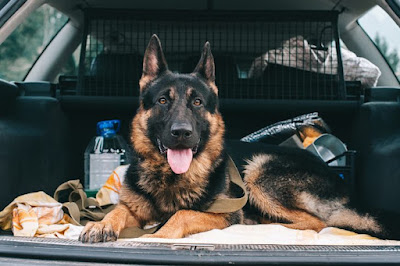Guide for Traveling With Your Dog
Traveling with a dog has never been easier, thanks to innovations in medicine, safety and convenience. Here’s an overview of what you need to pack up before taking your pet on the road:
 |
| How to travel with your dog |
1. Get the Medicine Right
During car trips, many dogs become either anxious, nauseated or both, and for those dogs, talking to your veterinarian about medication before you go will make the trip easier on you both. Ask about medications that help reduce vomiting as well as help with the issues that go along with or precede vomiting such as excessive drooling. An anti-anxiety medication can help as well. Your veterinarian can help select the right medication for your dog, and also advise you if medication is not the best option for your pet.
Of course, you’ll also want a supply of any medication your pet’s regularly on, along with pill pockets or whatever you use to get the pills in your pet (and don’t forget to follow with water to prevent the pill from sticking in your pet’s throat). Ask your veterinarian if there should be changes in your pet’s medicines while you travel, and if pills need to be taken with food or on an empty stomach.
Above all be sure to secure all medicines – your pet’s and yours, too – while you’re on the road to keep pets from being poisoned by pills not meant for them or too many of those that are. And don’t forget to pick up a first-aid kit, and program your cell phone with emergency numbers for your pet’s needs as well as your own.
2. Secure Your Dog
Forget having your dog ride shotgun with his head out the window. Safety experts now advise that dogs be secured in the vehicle in a crate or car-harness. There are a variety of travel crates available that can contain your dog in your car including hard-sided crates, soft-sided travel bags and even soft-sided containment tubes.
If you have a big dog and a small car, a crate likely isn’t an option. Fortunately, the last few years have seen many companies develop car-harness restraints that are not only comfortable for your dog but also work with your vehicle’s seat belts or child-seat anchors.
While barriers have long been popular in wagons, vans and SUVs, many barriers crumble or collapse under the forward impact of a dog in a crash. If you choose a barrier, be sure it can be secured to the car’s frame and is sturdy enough to hold up in an accident. If not, use a crate or a seat-belt harness.
You’ll also need to be sure you have a comfortable, slip-proof collar or harness, and that you have an ID tag with your cell phone number attached. If you have your dog micro-chipped (and you should!) make sure your pet’s chip is registered and the information is current. Bring along a short leash so you can more easily control your dog in unfamiliar surroundings.
3. Select Products for Travel Ease and Comfort
Pet-supply retailers have a incredible array of travel gear for pets, from travel beds and seat covers to collapsible bowls to special luggage designed to hold everything a pet needs to travel – including, if the dog is tiny, the dog himself. Check out the offerings to choose what’s best for your pet, and ask your veterinarian if you have any questions.
Once you have all the gear you need, hit the road! You’ll find yourself in good company, with more people than ever who’d never dream of taking a vacation while leaving the dog behind.
